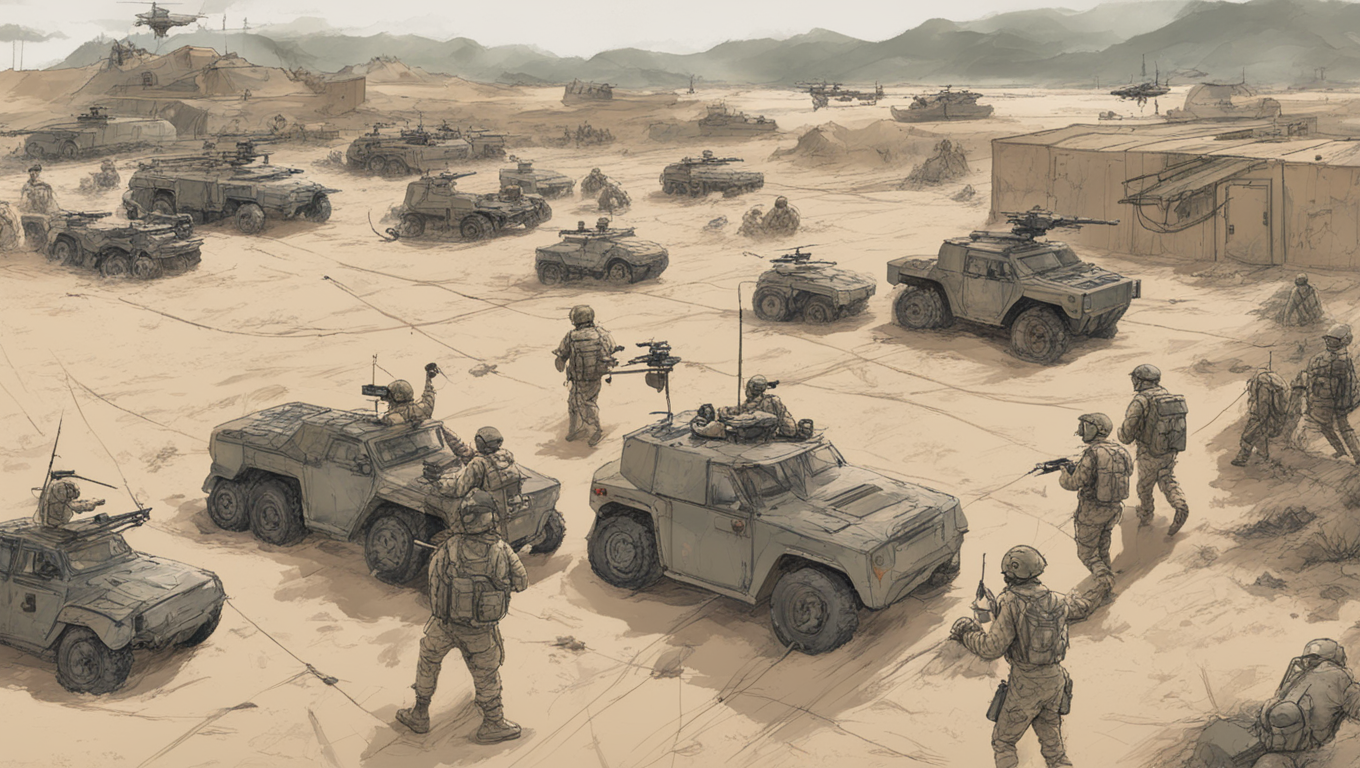South Korean and US troops have recently conducted joint future combat drills, employing a range of cutting-edge technologies including drones, unmanned vehicles, and wearable laser sensors. The purpose of these exercises was to enhance the military capabilities of both countries and prepare for potential threats, particularly from North Korea’s nuclear and missile programs. Over 120 soldiers participated in the drills, which took place in a mock-up town resembling Pyongyang, the capital of North Korea.
The troops utilized high-tech weapons systems such as the Multiple Integrated Laser Engagement Systems (MILES), which simulate real battle conditions using lasers. Drones were deployed for reconnaissance, some even equipped with assault rifles for added firepower. Additionally, South Korea deployed a multipurpose unmanned vehicle specifically designed to transport wounded personnel. These advanced technologies enabled the troops to identify enemy movements and assess the casualties suffered by allied forces.
South Korea’s army has been actively working on modernizing its military capabilities, and one of the key initiatives in this regard is the establishment of the TIGER brigade. This brigade, part of the 25th Infantry Division, serves as a pilot unit for future warfare operations utilizing artificial intelligence-powered drones and highly mobile fighting vehicles. The goal is to transform all combat units based on this model by the year 2040.
The joint future combat drills not only provided valuable training opportunities for troops but also served as an eye-opening experience for participants. First Lieutenant Derek Chen from the US 4th Infantry Division expressed his belief that the assets deployed during the drills would prove beneficial in future combat operations.
In addition to these drills, the South Korean army also organized an international future warfare competition, which involved troops from five different countries including Britain, Uzbekistan, and Cambodia. This competition aimed to further explore and evaluate the potential of advanced technologies in warfare.
The use of drones, unmanned vehicles, and laser sensors in these joint future combat drills highlights the growing importance of technology in modern warfare. These advancements offer enhanced capabilities in terms of reconnaissance, firepower, and casualty assessment, ultimately improving the effectiveness and safety of troop operations. As the military landscape continues to evolve, it is crucial for armed forces to embrace these technological innovations to maintain a competitive edge.





Use the share button below if you liked it.